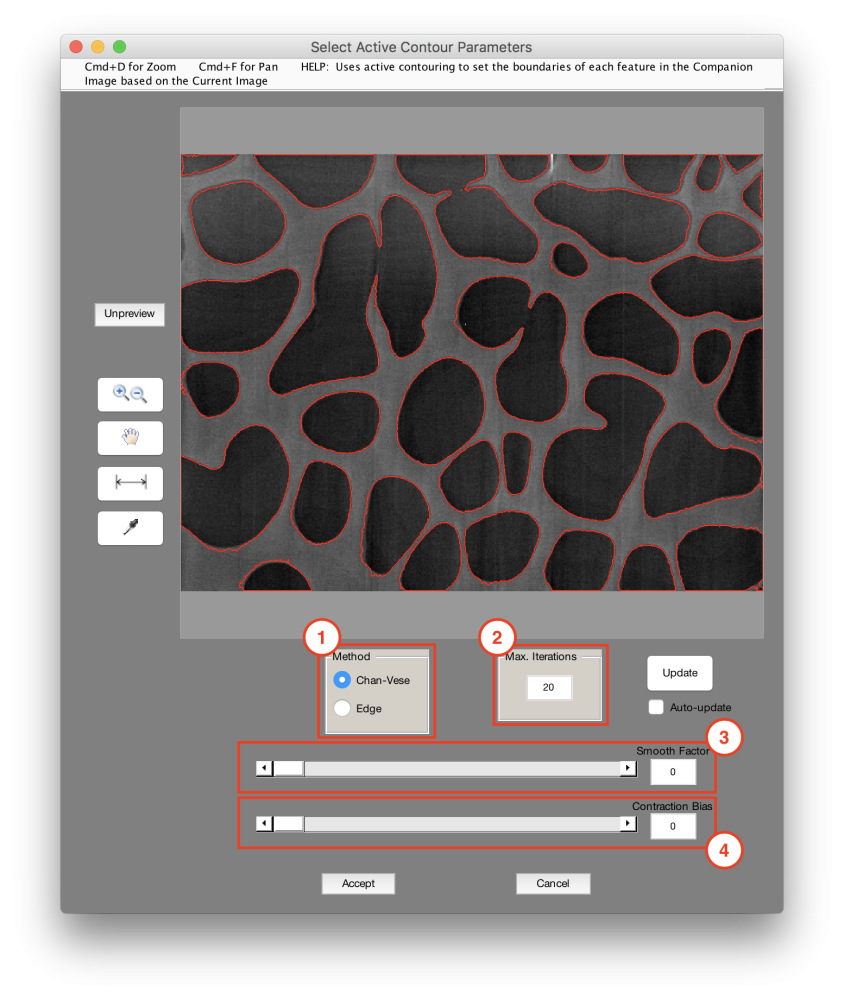Segmentation > *Active Contour
Requires B/W Companion Image
Uses active contouring [1,2] to set the boundaries of each feature in the Companion Image based on the Current Image. Active contouring grows or shrinks features to “snap” them to locally high-contrast boundaries. The Contraction Bias allows users to add some external “force” to the contour to increase the likelihood that it will shrink.

1. Method
- Chan-Vese: Uses the Chan-Vese method to drive the contour [1]. Tends to work faster than the edge method.
- Edge: Uses the edge method to drive the contour [2]. Is naturally more biased to shrink the contour. Tends to work more slowly than the Chan-Vese method.
2. Max. Iterations
The maximum number of iterations to evolve the active contour
3. Smooth Factor
Controls the resulting roughness of the active contour. Higher is smoother.
4. Contraction Bias
Controls the external force on the active contour. Higher makes it tougher for the active contour to grow.
References
[1] T. F. Chan, L. A. Vese, Active contours without edges. IEEE Transactions on Image Processing, Volume 10, Issue 2, pp. 266-277, 2001
[2] V. Caselles, R. Kimmel, G. Sapiro, Geodesic active contours. International Journal of Computer Vision, Volume 22, Issue 1, pp. 61-79, 1997.
Need more help with this?
Chat with an expert now ››


